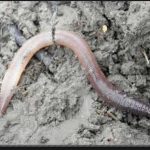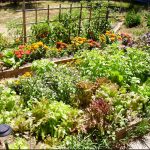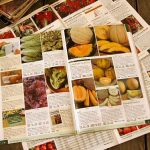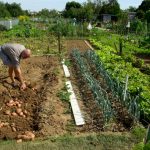10 Simple Soil Tests
Table of Contents
How to be sure the soil is healthy and ready for your organic seeds!
Getting the most out of your organic produce starts with having the best soil. The good news is that there are 5 different soil tests that you can do with items found around your house to test the quality of your soil. While sending out soil samples to a lab for experts to analyze may give you the most accurate results as far as chemical makeup goes, they are often impractical for the average gardener.
This system is known as Willamette Valley Soil Quality Guide, and although it was developed for farmers, gardeners across the United States can benefit from it. This is because the general principles that were developed by professors of soil science from Oregon State University apply anywhere. Some of the specifics, however, will differ from region to region.
It is important for gardeners to look at the test results in their entirety rather than just looking at one or two of the steps. For example, if you have sandy soil, it may be easy to work with, but if it is lacking in the other areas of the tests, it may not actually be the best for your plants.
The best time to do these tests are during the spring’s active growing weeks. However, you can do many of these tests throughout the year to make sure your soil is ready when planting time comes. Always check different parts of your garden to get a more accurate picture of the overall quality of your garden soil.
1. Tilth and Soil Structure
Soil that contains good levels of organic matter will form round aggregates, or crumbs. This indicates that the soil will allow water, oxygen, and other nutrients to move more freely through the plant which is essential for the development and growth of good, healthy roots.
To test this, dig 6 to 10 inches into the soil when it is moist but not too wet. Pull off a section of dirt about the size of a can of soup and use your fingers to break it apart. Decide if the soil is powdery, cloddy, or granular. The best soil will have a variety of sizes of aggregates that keep their shape when you squeeze them gently. If the aggregates take too much work to break apart or don’t break apart at all, the soil is too hard.
2. Compaction
This test helps determine how tightly-packed your soil is. Having soil that is loose is important not only for the development of roots, but also for the flow of water, oxygen, and other nutrients as well as the movement of earthworms and other important organisms.
To test for compaction, use a wire flag. Push straight down into the soil until you feel the wire bend. Ideally, the wire would not bend for at least 1 foot which gives you a full 12 inches of loose soil for your plants to root in.
3. Workability
This is important for the overall health of your plants. Soil with a low workability is prone to clumping and becoming compacted which can harm the root structure and prevent the flow of water and other important nutrients to the roots. Typically, low workability is indicative of persistent problems that must be resolved before planting can begin.
Farmers do this soil test by how much fuel their tractor uses during the soil preparation, which makes it a little more difficult for the average home gardener to test. The only way for a gardener to test the workability of their soil is to make a judgment of the amount of effort it takes to prepare your beds. If the soil is very difficult to work and requires breaking up a number of big clods, the workability is low.
4. Soil Fauna
Having high levels of helpful animals, insects, bacteria, and fungi is vital to the success of your garden. Most of these organisms are responsible for breaking down dead organic matter in the garden to turn it into usable nutrients for your plants, and others will fight off pests and diseases that plague garden plants.
To test the soil fauna, dig a hole at least 6 inches deep and watch carefully for animal life. For a maximum of four minutes, count the number and type of organisms you see. You may have to do some gently probing to find some of the sun-shy creatures. You should count at least 10 different critters within the four minutes to be sure that there are a good amount of them in your garden.
5. Earthworms
In addition to other organisms, having a good population of earthworms is huge indicator of soil quality. They indicate that there is a good amount of organic material, and they help to aerate the soil. They break down the organic material that they find in the soil into castings which provide your plants with essential nutrients right at the roots.
To test for earthworms, you can check the surface of the earth when it is damp for burrows and casts (feces). Then, use a shovel to dig six inches into the soil. Sift through the dirt that’s on the shovel and count the worms. Ideally, you would have at least 3 worms in that amount of dirt. The only exception to this is for people who live in the Southwestern areas of the United States. Because earthworms do not like hot soil, it is not likely that you will find any.
6. PLANT RESIDUE
If you’ve grown a cover crop, dig down 6 inches 1 month after turning it into the soil and then look for plant matter. The range of organic material is important to notice here. The presence of recognizable plant parts as well as plant fibers and darkly colored humus indicates an ideal rate of decomposition.
Why It’s Important
“The single most important component of healthy soil is organic matter,” Thompson says. But plants and other organic materials decompose only when soil organisms are there to do the work. Any sign of this process is a good sign, but the speed of decomposition is important, too. Fast decomposition is another indicator of soil quality. In poorly aerated soil, plants break down slowly, a condition that gives off a faintly sour scent.7. PLANT VIGOR
Start this test during the active growing season and look for healthy plant color and size that’s relatively uniform. Overall health and development must be judged for what’s considered normal for your region. One caveat: If you planted late or during a drought, or suffered a pest infestation, results of this test may be unreliable.
Why It’s Important
Plant vigor indicates soil with good structure and tilth, a well-regulated water supply, and a diverse population of organisms. It’s the best sign of effective soil management you’ll have above ground.8. ROOT DEVELOPMENT
Use a shovel or hand trowel to dig gently around a selected plant, preferably a weed you won’t miss. Once you’ve reached root depth, pull an annual plant up and check the extent of root development, searching for fine strands with a white healthy appearance. Brown, mushy roots indicate serious drainage problems—and a poor outlook for this year’s harvest. Stunted roots might also indicate disease or the presence of root-gnawing pests. “When you look at the roots, you can really see what’s going on,” Allmaras says.
Why It’s Important
Roots have the most immediate connection with and reliance on soil quality. Without air, water, biological activity, and crumbly soil to grow in, roots can’t do their job.9. WATER INFILTRATION
Take an empty coffee can with the bottom removed and push it into the soil until just 3 inches remain above the surface. Fill the can with water, marking the water height, and then time how long it takes for the water to be absorbed into the soil. Repeat this several times until the rate of absorption slows and your times become consistent. Anything slower than 1/2 to 1 inch per hour is an indication of compacted soil.
Why It’s Important
Good infiltration gets water to plants where they need it—at their roots—prevents runoff and erosion, and lets air move more efficiently into soil pores.10. WATER AVAILABILITY
Wait for a soaking rain; then record how long until plants start to show signs of thirst. Results will vary widely by region. The basic lesson is that if plants require more frequent watering than typical for your region, your soil is probably the culprit.
Why It’s Important
Porous soil can better resist evaporation and adequately supply plants between waterings. “It could make all the difference in the world if water were to go another inch deeper,” Allmaras says.The Willamette Valley Soil Quality Card Guide, on which this article is based, provides you with even more information and guidance on evaluating your soil and how to improve it based on the results of this test. Get a copy from the Oregon State University Extension Service.



















